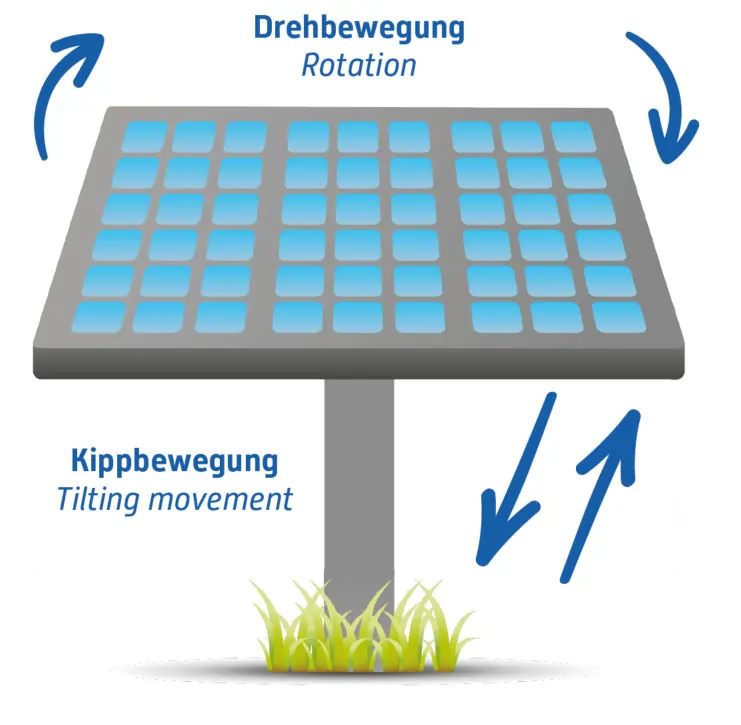At this location, a movable, or “tracking”, photovoltaic system can be observed. Such systems are mounted on a specialized structure, often on a mast. The unique feature is that the orientation of the photovoltaic module surface adjusts to the sun’s path, ensuring optimal light absorption – and thus maximum performance – at all times.
This particular system is a dual-axis tracking photovoltaic installation that was installed in 2007. It has a nominal capacity of approximately 5 Kilowatt peak (kWp). The module surface, measuring 38 m2 consists of 24 photovoltaic modules with a respective output of around 200 Wp.
Tracked photovoltaic systems are usually installed on open fields. There are also variants that can be installed on rooft ops, including rotating halls that track the entire building on a single axis.

Single or dual axis tracking
A distinction is generally made between single-axis and dual-axis tracking. Whereas with single-axis tracking, the module field follows the sun either horizontally or vertically, dual-axis tracking can do both. This has a decisive eff ect on the yield. In fact, with the single-axis version, an increased electricity yield of up to 25% can be expected, with the dual-axis version up to 40%.
Astronomical or sensor-controlled tracking
With astronomical tracking, the control unit follows a programmed, location-specific course
of the sun. In this case, the actual solar radiation is not taken into consideration. This setting
is therefore mostly used in regions where poor light conditions and diff use light are rarely to
be expected.
The sensor-controlled tracking always looks for the brightest point in the sky and aligns the
solar modules accordingly. In this way, the most eff ective energy yield is achieved. However,
due to the highly specialised technology, these systems are considerably more expensive to
purchase and to maintain.
Two-axis tracking photovoltaic systems
- rotate horizontally and tilt vertically to follow the inclination of the sun and the sun‘s path.
- have an up to 40% higher electricity yield compared to stationary systems.